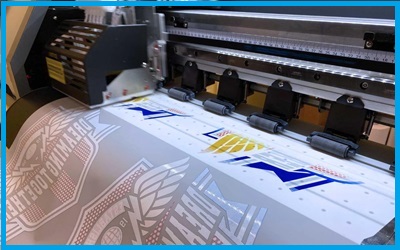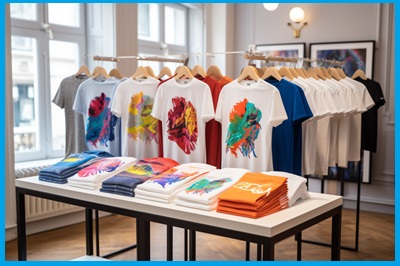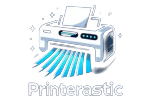|
Listen to article
Getting your Trinity Audio player ready...
|
Navigating the realm of garment printing has been an enlightening journey for me, especially when it comes to deciphering between Direct to Film (DTF) printing and sublimation printing. In my quest for the perfect printing method, I’ve encountered these two techniques, each with its unique approach and outcomes. The question that often arises is: What is the difference between DTF and sublimation printing?
Through my exploration and experimentation, I’ve uncovered the distinctive characteristics of each, shedding light on their differences and helping me determine the best option for various printing projects. Let’s start this journey together to unravel the mysteries of DTF and sublimation printing.
Contents
- 1 What is DTF Printing?
- 2 What is Sublimation Printing?
- 3 What is the difference between DTF and sublimation Printing
- 4 FAQs
- 4.1 1. Which fabrics can be used with DTF and sublimation printing?
- 4.2 2. What are the key advantages of DTF printing?
- 4.3 3. What are the main benefits of sublimation printing?
- 4.4 4. Can both DTF and sublimation printing be used for personalized products?
- 4.5 5. Are there any limitations to each printing method?
- 5 Conclusion
What is DTF Printing?
DTF printing has been a revelation in my exploration of garment customization. It’s a process that resonates with my desire for precision and versatility in printing techniques. With DTF, the journey begins by printing designs onto a special film using a compatible printer. What struck me initially was the clarity and sharpness of the designs on the film, capturing every intricate detail with remarkable accuracy.
Once the design is printed, it’s carefully transferred onto the fabric using a heat press, where the magic truly happens. Witnessing the fusion of the design onto the fabric, creating a seamless bond that feels like an extension of the garment itself, is a moment of sheer satisfaction. The versatility of DTF printing allows for vibrant colors and intricate designs on various fabrics, opening up a world of creative possibilities.

Through my experiences with DTF printing, I’ve come to appreciate its reliability and efficiency in achieving high-quality results, making it a go-to option for personalized garment printing projects.
What is Sublimation Printing?
Sublimation printing is a unique method of transferring designs onto fabric and other items. It involves printing the design onto special transfer paper using sublimation ink, which has the remarkable property of turning from a solid directly into a gas when heated.
The printed design on the transfer paper is then placed onto the fabric or substrate and subjected to heat and pressure using a heat press machine. As the heat is applied, the sublimation ink transitions into a gas and permeates the fibers of the material, creating a vibrant, permanent, and fade-resistant print that becomes part of the fabric itself. This process ensures that the design is not only visually stunning but also durable, as it won’t crack, peel, or fade over time, even after repeated washes.

Sublimation printing is widely used for customizing clothing, accessories, and various polyester-coated items, offering endless possibilities for creative expression with its vivid colors, sharp details, and long-lasting results.
You can know about What kind of printer do you need for sublimation? Guide
What is the difference between DTF and sublimation Printing
In my journey through the world of garment printing, I’ve encountered both DTF (Direct to Film) and sublimation printing techniques, each offering its unique set of advantages and considerations. Let me share my experience about what is the difference between DTF and sublimation printing:
| Aspect | DTF Printing | Sublimation Printing |
| Initial Process | Begins by printing the design onto a special film using a compatible printer. This film acts as a carrier for the design. | Involves printing the design onto special transfer paper using sublimation ink, which turns into a gas under heat. This ink is specially formulated for sublimation printing. |
| Fabric Compatibility | Offers versatility, allowing printing on a wide range of fabrics including cotton, polyester, and blends. | Primarily suitable for polyester fabrics or materials coated with a polyester layer. This method may not be compatible with natural fibers like cotton. |
| Vibrancy & Durability | Results in vibrant colors and sharp details on various fabrics. The ink adheres well to the fabric, ensuring durability and wash-fastness. | Known for its exceptional color vibrancy and longevity. Sublimation ink bonds directly with the polyester fibers, resulting in prints that are highly durable and resistant to fading, cracking, or peeling, even after multiple washes. |
| Design Flexibility | Allows for precise design placement on the fabric. Since the design is printed onto a film, it can be positioned accurately before transferring it onto the fabric using a heat press machine. | Offers versatility in design, but requires attention to fabric selection and printing process. Design placement may vary depending on the type of fabric and the sublimation equipment used. |
| Application Range | Widely used for customizing garments such as t-shirts, hoodies, and bags. Also suitable for other fabric items and accessories. | Extends beyond garments to include various polyester-coated items like mugs, mousepads, phone cases, and polyester fabrics used in home decor and signage. Sublimation printing offers a broader range of applications due to its compatibility with different substrates. |

Cost Differences
When comparing the cost differences between DTF and sublimation printing, several factors come into play:
| Cost Factors | DTF Printing | Sublimation Printing |
| Equipment Costs | Needs a special printer and heat press machine. | Requires a specific sublimation printer and heat press. |
| Consumable Costs | Requires special film and ink cartridges. | Needs sublimation transfer paper and ink. |
| Fabric & Material | Can print on various fabrics. | Best for polyester fabrics or coated items. |
| Maintenance Costs | Regular upkeep required for equipment. | Maintenance necessary for equipment durability. |
| Production Efficiency | May take more time due to multiple steps. | Simplified process but may need longer print times. |
DTF vs Sublimation: which is best option?
If you’re primarily working with polyester fabrics or items coated with polyester, I’d suggest sublimation printing. Its exceptional color vibrancy and durability make it perfect for such materials, ensuring your designs remain vibrant and long-lasting even after repeated washes or outdoor exposure. Plus, the versatility of sublimation printing allows you to customize a wide range of items beyond just garments, including mugs, mousepads, and phone cases.
On the other hand, if you’re looking for more design flexibility or need to print on a variety of fabrics including cotton and blends, DTF printing might be the better option. Its precise design placement and vibrant colors make it ideal for intricate designs or projects where you need full control over the printing process.

Ultimately, the best option depends on your specific project requirements and preferences. Consider factors such as fabric type, design complexity, and intended use of the printed products to make an informed decision.
FAQs
1. Which fabrics can be used with DTF and sublimation printing?
DTF printing offers versatility, allowing printing on a wide range of fabrics, including cotton, polyester, and blends. Sublimation printing works best on polyester fabrics or items coated with polyester.
2. What are the key advantages of DTF printing?
DTF printing offers precise design placement, vibrant colors, and durability on various fabrics. It also allows for intricate designs and flexibility in fabric choices.
3. What are the main benefits of sublimation printing?
Sublimation printing provides exceptional color vibrancy and durability, with prints that are fade-resistant and long-lasting. It’s also versatile, allowing customization of polyester-coated items beyond just garments.
4. Can both DTF and sublimation printing be used for personalized products?
Yes, both methods are commonly used for creating personalized garments, accessories, and promotional items. DTF printing is suitable for a wider range of fabric types, while sublimation printing excels on polyester-based materials.
5. Are there any limitations to each printing method?
DTF printing may require more steps in the printing process, while sublimation printing is limited to polyester-based materials. Additionally, both methods may have specific equipment and consumable requirements.
Conclusion
Reflecting on my experiences, I’ve come to understand that the choice between DTF and sublimation printing depends on the specific requirements of each project. For intricate designs and versatile fabric choices, DTF printing may be the preferred option. However, for achieving vibrant, durable prints on polyester-based materials, sublimation printing emerges as the best choice.
So, my journey through garment printing has highlighted the differences between DTF and sublimation printing, emphasizing the importance of understanding their unique qualities and applications to achieve the desired results. So, what is the difference between DTF and sublimation? It’s all about the fabric compatibility, precision, and outcome you’re aiming for in your printing projects.


